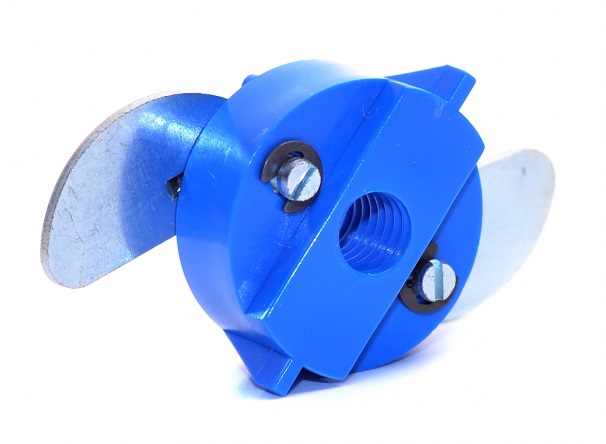New Products
If you have created a new product, or even if you merely have the idea for a new product in development, there are usually several different ways that you can stop others from stealing your idea.
An invention usually falls into one of two categories: it concerns how something works; or it concerns how something looks. The first kind are typically protected by Patents and/or Utility Models, and the second kind by Registered Designs, Unregistered Design Right and/or Copyright. Of course, some inventions may be protectable in more than one way.
Patents
A patent gives its owner the right to prevent others from using their idea commercially, such as by making or importing a patented product, or using a patented process. A patent must be applied for before the invention is made public. In any event, to be valid, the invention must be:
- 'new' - even very small differences count, but your idea must be kept confidential before filing a Patent application; and
- 'inventive' - one way of getting a feel for whether something is inventive is whether the thing that makes it 'new' provides any technical advantage; however, we recommend that you contact us if you are unsure.

Patents are territorial rights. A UK Patent only provides protection in the UK, a French Patent only provides protection in France, and so on. However, it is possible to have an International Patent Application. This is an application only; at some point, individual national Patent applications must be made, based on the International Patent Application, in order to obtain granted Patents.
It is also possible to file a European Patent application. This is effectively a 'bundle' of national rights that, once granted, must be 'validated' in each country in which you desire protection. This system can be considerably cheaper than applying for each national Patent on an individual basis.
We can handle all of these kinds of Patent & Patent application and, via our extensive network of overseas attorneys, we can manage your portfolios of foreign patent rights at very reasonable prices.
Typical* life of a UK patent application
- 0 months: The Patent Specification is drafted, and the Patent Application is filed at the UK Patent Office.
- 4 - 6 months: The Patent Office issue a Search Report. The documents that are found in the Search Report will form the basis of their Examination.
- 18 months: The Application is Published.
- 2 - 3 years: The Patent Office Examine the Application. If they do not pass the application for grant immediately, we have the opportunity to submit arguments and/or amendments to the Specification before the application is refused.
- 2 - 4 years: The Application is either Granted or Refused.
* - The total time can take several years; however, in certain circumstances (such as for "Green" inventions), the Application can be accelerated and granted within 1 year.
We require payment in advance for preparing and filing a patent application. Official fees may be payable at certain points throughout the procedure, deptending on the strategy that is being used. In addition, if you would like us to review search results and/or provide our opinon on how best to respond to Examination Reports, there will be an additional charge.
Ten reasons to use patents:-
- COPYING – Stop others from copying your invention/product.
- BUSINESS ASSET - It’s an asset to your business, which looks good for investors and banks, and when you come to sell.
- LICENSING – You can allow others to make or sell your invention product and charge them royalties.
- REDUCE YOUR CORPORATION TAX – The new “Patent Box” tax relief scheme from the government allows you to reduce your corporation tax liability to only 10% (from 20%) on the profits made from selling your patented invention/product.
- PROVIDES IMMEDIATE PROTECTION - as soon as the patent application is lodged at the Patent Office you can talk about your invention.
- MARKETING – Buyers and end-consumers like patented products.
- DETERRENT – It prevents many competitors from even considering copying your invention/product.
- PATENT PENDING – The words “patent pending” together with an official number can be used on the product/literature/website/packaging, etc...
- STOP IMPORTATION INTO UK – A UK patent can be used to stop importation into the UK.
- COMMERCIAL ASSET - A patent can be sold or mortgaged.
Top
Utility Models

Utility Models are also known as 'Petty Patents' or 'Innovation Patents' as they offer a shorter term of protection than patents. However, they offer several key advantages. For instance:
- it is often easier to obtain a granted utility model, as the Examination procedure is not as strict as for patents;
- they are often granted more quickly;
- they are cheaper; and
- they may be valid in some countries, even when the application is lodged after the invention has been made public.
They are not yet available in the UK or as an EU-wide property right. However, they are available in many other countries such as Japan, Germany, Italy and Australia.
Top
Registered Designs

Registered Designs protect the appearance of a product, rather than the way it works, and can be used to stop competitors from making/selling products that, in appearance, give the same overall impression.
Registered Designs (also known as 'Industrial Designs' and 'Design Patentents') are available in most countries of the world. In the UK, it is possible to get both a UK Registered Design as well as an EU-wide Registered Design, and the process for both is relatively fast.
Top
Unregistered Design Right

Various aspects of the appearance of an article are automatically protected under Unregistered Design Right (in a similar way to Copyright). However, the period of protection is quite short when compared to Registered Designs. In addition, you must also be able to prove copying to be able to enforce Unregistered Design Right (i.e. Unregistered Design Right is not a monopoly right).
We can offer advice if you are unsure whether your, or a competitor's, product is protected by Unregistered Design Right. In any event, Unregistered Design Right is available in the UK and Europe-wide, but not in some other major jurisdictions, such as the USA.
Top
Copyright

Copyright is an automatic right (similar to Unregistered Design Right) in that it does not need to be registered.
The basic form of copyright protects literary, dramatic, artistic and musical works. There are also other forms of copyright which specifically protect such things as the layout of circuits on semiconductors, and performing rights of musicians.
Copyright is effective almost everywhere in the world; however, to enforce your copyright, you must be able to prove copying. There are various simple ways in which you can improve your legal position, and we can advise on these.
Top
Get in touch



